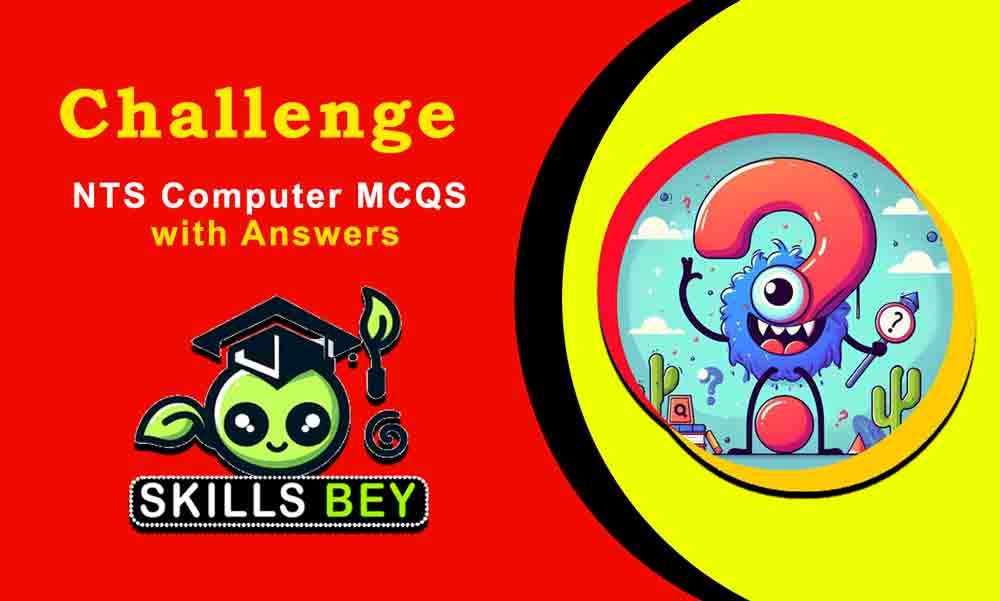Welcome to the NTS Computer Multiple Choice Questions (MCQs) Quiz! This quiz offers an interactive opportunity to test your knowledge and understanding of fundamental computer science concepts.
NTS computer mcqs with answers quiz
With carefully curated questions and answers, you’ll have the chance to assess your comprehension while familiarizing yourself with crucial keywords.
Whether you’re preparing for an examination or simply seeking to expand your knowledge, this quiz provides an engaging platform to reinforce learning.
Embrace the benefits of quizzes, including enhanced memory recall and active participation, as you navigate through these essential computer science topics. Let’s embark on this educational journey together!
Did you tried NTS Computer Multiple Choice Questions?
or not here is quick description about this quiz.
RAM (Random Access Memory)
Description: RAM is a type of computer memory that can be accessed randomly; it is volatile and used for storing data temporarily.
Question: Which of the following is a volatile memory?
Answer: b) RAM
CPU (Central Processing Unit)
Description: CPU is the core component of a computer responsible for executing instructions, performing arithmetic and logical operations, and managing data flow.
Question: What does CPU stand for?
Answer: a) Central Processing Unit
HTML (Hyper Text Markup Language)
Description: HTML is the standard markup language for creating web pages; it defines the structure and layout of a web document.
Question: What does HTML stand for?
Answer: a) Hyper Text Markup Language
LAN (Local Area Network)
Description: LAN is a network that connects computers and devices within a limited geographical area, such as a home, office, or school.
Question: What does LAN stand for?
Answer: a) Local Area Network
Python
Description: Python is a high-level programming language known for its simplicity and readability; it is widely used in web development, data analysis, artificial intelligence, and more.
Question: Which of the following is an example of a high-level programming language?
Answer: c) Python
Hard Disk
Description: A hard disk is a non-volatile storage device used for storing and retrieving digital data using magnetic storage and rotating disks.
Question: Which component of the computer is responsible for storing data permanently?
Answer: c) Hard Disk
URL (Uniform Resource Locator)
Description: URL is a web address that specifies the location of a resource on the internet, such as a web page, image, or file.
Question: What does URL stand for?
Answer: b) Uniform Resource Locator
CPU Cache
Description: CPU cache is a small and fast memory unit located on the CPU chip; it stores frequently accessed data and instructions to speed up processing.
Question: What does CPU cache primarily aim to do?
Answer: a) Store frequently used data for quick access
Network Topology
Description: Network topology refers to the physical or logical layout of a computer network, including how devices are connected and communicate with each other.
Question: Which of the following is not a type of network topology?
Answer: c) Linear
Stack
Description: A stack is a data structure that follows the Last In, First Out (LIFO) principle; elements are added and removed from the top of the stack.
Question: Which data structure follows the Last In, First Out (LIFO) principle?
Answer: b) Stack.
Like my page and follow.

